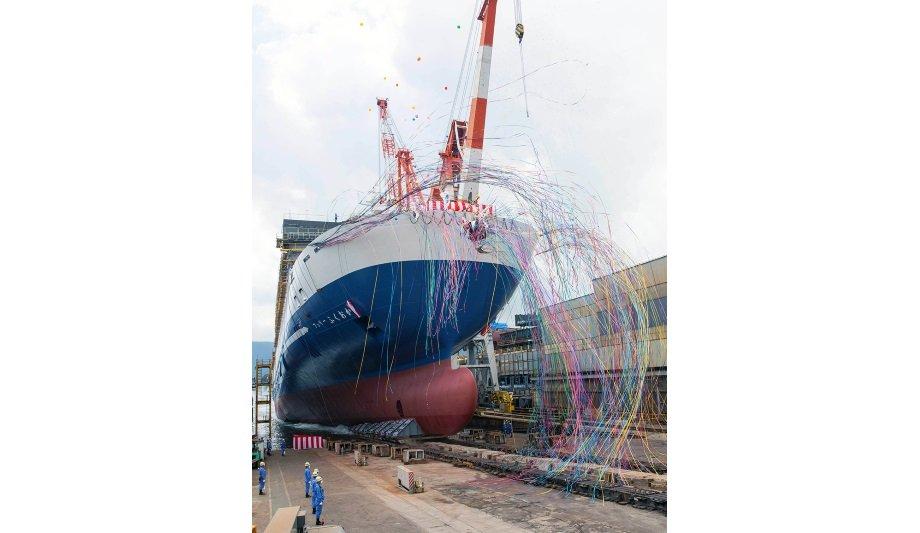Mitsubishi Shipbuilding Co., Ltd., a part of Mitsubishi Heavy Industries (MHI) Group based in Yokohama, held a christening and launch ceremony on October 8th, for the second of two large ferries being built for Japan Railway Construction, Transport and Technology Agency (JRTT) and Meimon Taiyo Ferry Co., Ltd.
The ceremony took place at the Enoura Plant at MHI’s Shimonoseki Shipyard & Machinery Works in Yamaguchi Prefecture. The handover is scheduled for March 2022 following the completion of interior work and sea trial.
Maintenance of transport facilities
The new vessel will replace the FERRY FUKUOKA II, in operation since 2002, and enter service from March 2022 on a regular route between Osaka and Shinmoji in Kitakyushu. The new vessel, built by Mitsubishi Shipbuilding and operated by Meimon Taiyo Ferry, is jointly owned by Meimon Taiyo Ferry and JRTT, an Incorporated Administrative Agency to support the provision and maintenance of transport facilities and other infrastructure based on Japan’s transport policy.
Named FERRY FUKUOKA, the new ship is 195m long, 27.8m wide, and 20.3m deep, with gross tonnage of approximately 15,400. The largest ship ever operated by Meimon Taiyo Ferry, the vessel has passenger capacity for 675 persons, and vehicle capacity for approximately 162 12-meter trucks and 140 passenger cars. The interior design concept is 'sparkle of a bayside city,' evoking a modern waterfront.
Providing improved service
The propulsion plant utilises a hybrid-type azimuth propulsion assist method
The broad public space taking advantage of the vessel’s large size, along with a spacious restaurant, bath, and lounge with sweeping views, allow for cruising in comfort. The space can also be efficiently utilised to provide improved service, such as converting vehicle storage space into a passenger deck and eliminating Japanese style passenger cabins to create cabins with beds.
The propulsion plant utilises a hybrid-type azimuth propulsion assist method, which combined with an air lubrication system achieves considerable energy efficiency (approximately 35% reduction in fuel consumption for carrying a large truck compared to existing vessels), and improved ship steering capabilities. In addition, along with lower CO2 emissions realised from energy efficiency, the adoption of hybrid-type scrubber curbs atmospheric emissions of sulfur oxide (SOx), providing for environment-friendly operation.
Contributing to reliable transport
Currently, shipping in Japan is undergoing a modal shift to marine transport from the standpoint of reducing CO2 emissions in land transport, a shortage of long-haul drivers, and working style reforms. Accordingly, demand is rising for ferries and RORO ships, and larger vessels.
Going forward, Mitsubishi Shipbuilding will continue to construct ferries and passenger/cargo ships that offer superlative fuel efficiency and environmental performance and contribute to reliable transport, in order to help resolve various issues together with its business partners, vitalise marine transport, and contribute to environmental protection.
